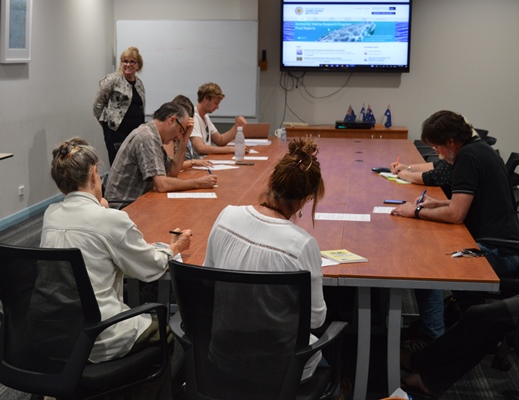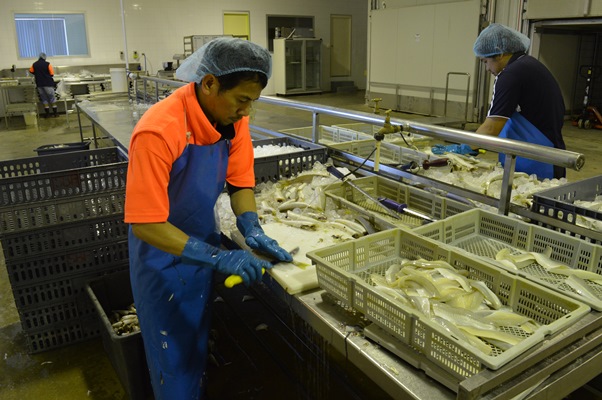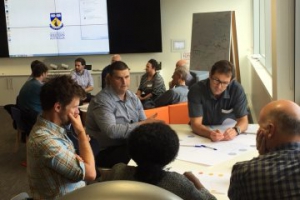WHAT: A series of 3 FREE seminars on past, current and planned research in the Kimberley
WHEN: 1:30-3:30pm, Friday 9 November
WHERE: WA Conservation Science Centre, Dick Perry Avenue, Kensington, WA
SEMINAR 3: FRIDAY 9 NOVEMBER
The WAMSI Kimberley Marine Science Program: A once in a lifetime opportunity
Dr Chris Simpson
Program Leader Marine Science Program, Department of Environment & Conservation
Node Leader, WAMSI Kimberley Marine Science Program
Recent resource development proposals by oil and gas companies to process and export Browse Basin hydrocarbons on the Kimberley mainland and offshore islands have recently put the entire Kimberley region under the spotlight. Although the number of people living in the Kimberley and visitors to this region is still relatively small, the natural and cultural values of the Kimberley region are very well known by Australians. The Kimberley region is considered widely as one of the world’s last great wilderness areas, a biodiversity ‘hotspot’ and a centre of Aboriginal culture. The resource development proposals provided impetus for the State Government’s Kimberley Science and Conservation Strategy (KSCS) that would help ensure that any development would be compatible with the maintenance of the natural and Aboriginal heritage values of this region.
The WAMSI Kimberley Marine Science Program is a key element of the KSCS and is a once in a lifetime opportunity to undertake and integrated program of marine research in this region. The KMRP is focused on providing the scientific information to underpin the conservation and management of the marine environment of the Kimberley in general and the proposed regional network of marine parks and reserves in particular. The KMRP began formally with the endorsement of KMRP Science Plan by the WAMSI Board in December 2011. The KMRP Science Plan was preceded by several other documents and reports, including the 2008 WAMSI a turning of the tide report, highlighting the urgent need for a program of marine research in the Kimberley coastal waters.
The presentation will briefly outline the history, objectives, geographical focus, research directions and outcomes of the KMRP. The operational and logistical difficulties of undertaking marine research in such a large and remote location will also be discussed.
Download slides
An insider’s perspective on marine research in the Kimberley
Mr James Brown
General Manager, Kimberley Marine Research Station & Cygnet Bay Pearls
The Kimberley Marine Research Station (KMRS) was first established in 2009 with guidance from WAMSI in an endeavour to support and contribute to an enhanced marine science effort throughout the remote Kimberley region of the far north-west.
KMRS was founded upon the overarching ethos of generating the highest standard of truly independent, peer-reviewed scientific output for the greater public good, working towards bridging relevant knowledge gaps on this remarkable yet largely under-studied marine region.
Located at Cygnet Bay Pearl Farm on the tip of the Dampier Peninsula, 200km by road north of Broome, the KMRS venture was pioneered by Kimberley born-and-bred marine biologist and third generation pearl farmer James Brown.
Today, KMRS represents one of only five marine research stations along WA’s 27,000km coastline; the first and only fully operational marine research facility along the 13,500km contours of Kimberley coastline; and the only privately funded marine research facility in the country.
Along with resident marine scientists based permanently on-site year round, the Station offers a mainland base, vessels, infrastructure, support personnel and 65 years’ worth of local knowledge and marine expertise to researcher teams with boating, diving and aquarium facilities available for research use.
This presentation will provide insight into the opportunities, logistics and exciting potential for marine scientists interested in operating in and on Kimberley waters through KMRS.
RSVP
RSVPs are essential please, for catering purposes
General public and media welcome to attend
RSVP & more info: Dina Erba dina.erba@wamsi.org.au
VENUE
WA Conservation Science Centre, Department of Environment & Conservation,
Dick Perry Avenue, Kensington
PAST SEMINARS
SEMINAR 2: FRIDAY 21 SEPTEMBER
Prof Charitha Pattiaratchi (UWA)
WAIMOS Infrastructure in the Kimberley
West Australian Integrated Marine Observation System (WAIMOS) is a node of the Integrated Marine Observation System (IMOS) and with recent co-investment from the WA State Government, extended its deployment of infrastructure to the northern waters of Western Australia, including the Kimberley region. In this presentation, the current status of the instrumentation deployed and example data highlights will be presented. The IMOS infrastructure located in these regions includes continental shelf moorings (ADCP, thermistor and water quality loggers) and ocean glider transects for subsurface water properties; passive acoustic sensors for whale monitoring; AUV transects for benthic monitoring and, remotely sensed data products (SST and ocean colour). In the north-west the infrastructure is designed to monitor the influence of north-west shelf region on Leeuwin Current dynamics and the local continental shelf processes. Examples of different processes, identified using the data streams from the Kimberley region will be presented.
Download audio
Download slides
Mr Clay Bryce (WA Museum)
The WA Museum Woodside Collection Projects (Kimberley): 2008-2015
The WA Museum has been accumulating data on Kimberley marine fauna since 1976. In 2008 the Museum’s Department of Aquatic Zoology decided to ascertain the current state of the region’s marine biodiversity knowledge. With help from Woodside Energy, it embarked on an ambitious program to mine Kimberley marine faunal data from Australian museums, as well as floral records from the WA Herbarium. This resulted in over 60,000 records equating to over 6000 marine species. Augmenting this historical approach is a series of contemporary rapid assessment surveys (2009 – 2014), from Cape Leveque to the WA/NT border, examining 8 faunal taxa and the marine flora. This talk will provide an overview of these marine biodiversity programs.
Download audio
SEMINAR 1: TUESDAY 31 JULY
Dr Barry Wilson (Murex Consultants)
Patterns of life on Kimberley shores
The major controls of palaeographic development of the North West Shelf, including the Kimberley, have been climatic and sea level change and tectonism. The history of these events, especially those of the Quaternary, superimposed on the regional geology, has determined the range of habitats, the biological connectivity between them and adjacent regions, and the evolutionary development of the marine fauna. In this presentation, the contemporary marine fauna of the Kimberley is discussed in these historical biogeographic terms.
Download audio
Dr James Gilmour (AIMS)
Two decades of research on the Kimberly’s oceanic reef systems: dynamics and connectivity of coral assemblages in a changing world
Two decades of research on the Kimberly’s oceanic reef systems: dynamics and connectivity of coral assemblages in a changing world
This talk summarises almost twenty years of research by AIMS on the oceanic reefs of north-western Australia, focusing on the Scott Reef system. Scott Reef is unique in being far from the influence of many human activities responsible for the degradation of coral reefs globally, but for a catastrophic mass bleaching event in 1998. The 80% reduction in coral cover that followed provided an opportunity to quantify the rates and processes of recovery following a massive climatic disturbance. The recovery of the reef after 12 years is explained in the context of its connectivity to other reef systems and the underlying demography of its coral assemblages.
Download audio
Download slides






